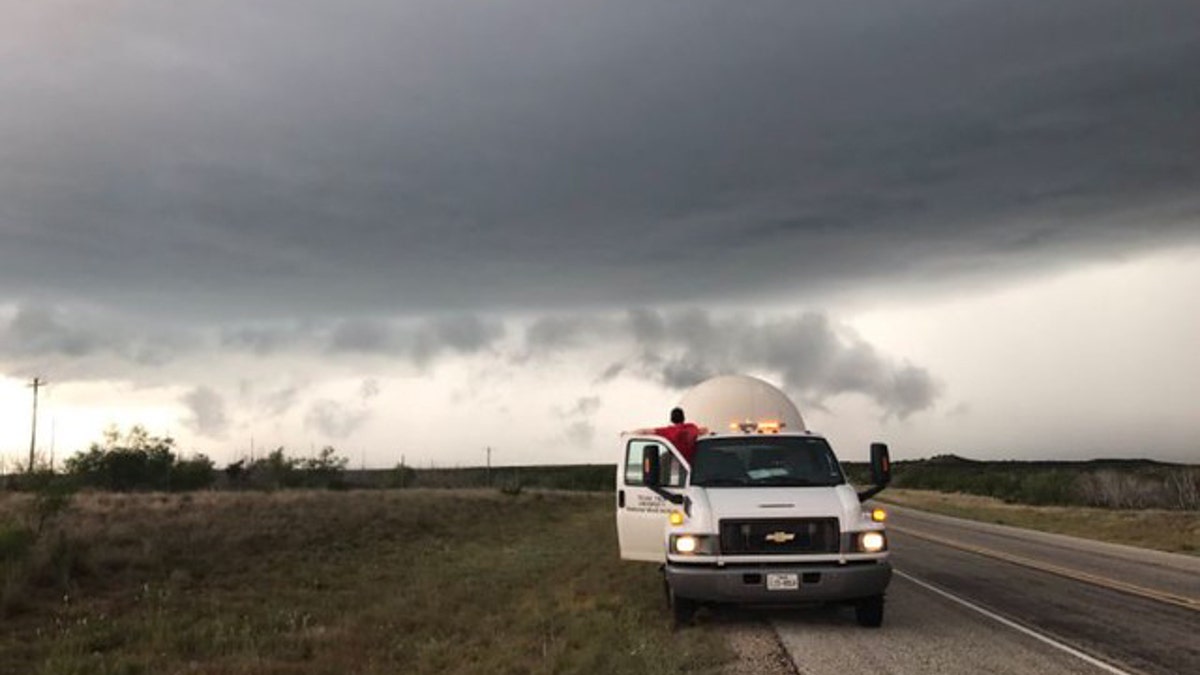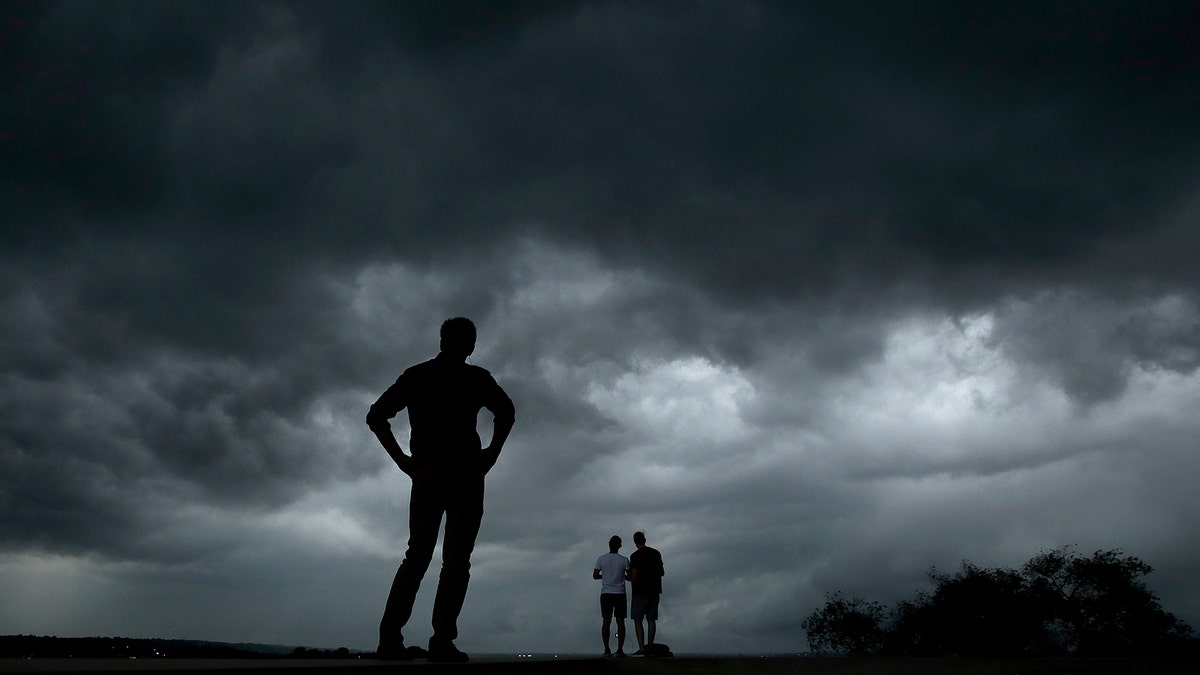
The growing hobby of storm chasing is raising concerns in the scientific community. (NOAA NSSL)
NORMAN, Okla. – The art and science of “storm chasing” was once a niche pastime involving few meteorologists and researchers with a car, a long-lens camera, and a hypothesis to determine. But a combination of Tinseltown and technology has turned it into something of a mainstream, anyone-can-do craft with deadly consequences.
“When I did storm chasing back in the ’80s, you never had to worry about crashing into someone. Now you wouldn’t catch me out there,” William Bunting, Chief of Forecast Operations at the Storm Prediction Center in Norman, just outside of Oklahoma City, told Fox News. “It’s too crowded.”
Hollywood glorification is also party to blame, experts contend.
“Ever since the movie ‘Twister’ came out in 1996 the whole thing exploded and it has just gotten bigger and busier,” said Rick Smith, the warning coordination meteorologist at the Norman Forecast Office of the National Weather Service. “There are people out there who throw the kids in the car and say 'let’s go.' It is dangerous when you get that many cars on the road around a storm. It’s one thing to go to the zoo and see animals; it is another thing to get in the cage with them. It can kill you very violently.”
The Steven Spielberg flick, scientifically inaccurate but based on Oklahoma chasers, popularized the little-known notion. From there, its presence in popular culture burgeoned into a multitude of reality shows and documentaries. But it’s been the explosion of social media and the push for viral videos and “influencer” status that has catapulted the adrenaline-devouring hobby into an alarming stratosphere.
“It is at the point where it is really impacting out scientific research. We’ve had times when we have had to turn around and leave the storm just because there is too much traffic,” lamented Erik Rasmussen, a research scientist at the University of Oklahoma Cooperative Institute working with the NOAA National Severe Storms Laboratory. “These storms are so precious; we don’t get to intercept that many so having to leave a storm because of traffic, that is just painful.”
In Rasmussen’s view, it’s a disport – that in many cases – is now perpetuated by ego and the fame game on social media. Some also see it as making a buck or two through acquiring hits and views or partnering with local television stations to sell content.
Nonetheless, experts in the field also argue that the hordes have made the once refined skill of chasing more dangerous than mother nature’s wrath itself.
“It’s very dangerous, a lot of young folks think they can do this. But even the most experienced out there have been killed,” Rasmussen continued. “Nature just throws curveballs.”
Law enforcement has long bemoaned that not only do the growing throngs of amateur storm chasers make small back-country roads look like there’s a succession of high-speed chases, but they present an inherent danger to themselves and others with aggressive, reckless driving crisscrossing all sides of the road as well as farm fields and pastures, opting for excessively high speeds and ignoring road signs.
The growing phenomenon has also resulted in an array of tragedies in recent years; both in the realm of the professional and the dabbler.
In March 2017, a collision killed three storm chasers in west Texas. The following year, a $125 million wrongful death suit was filed against the Weather Channel and other connected parties on behalf of two of the deceased passengers, alleging that the driver blitzed through a stop sign and that warnings about the driving habits had previously gone ignored.
In 2013, a giant twister took the lives of three widely-respected storm chasers featured on a Discovery Show in El Reno, Okla. Four others perished on the interstate in that same storm.

File photo (NOAA NSSL)
And late last month as a series of tornadoes swept through several states in the south and Midwest, the Oklahoma Highway patrol documented one casualty from the Mangum touchdown – stemming from two vehicles operated by storm chasers rather than the elements themselves. Rasmussen also pointed out he and his team from the NOAA also “lost that storm” as a consequence of the traffic congestion.
There are even dozens of adventure-centric tour companies that specialize in what has been dubbed “tornado tourism.” Each offers their own spin in taking individuals on “thrilling storm chasing vacations” across the Great Plains, and offer cutting-edge technology and the best-of-the-best guides.
VACATIONS ON THE EDGE: THE RISE OF THE WAR TOURISM INDUSTRY
Last week, one group, Silver Lining Tours, released a statement describing the “unfortunate incident” in Kansas in which they were hit with a rain-wrapped satellite tornado two miles southeast of the parent circulation.
“The sudden gust knocked two vans off the road, rolling them and leaving one upside-down,” the statement read. The other two vehicles are said to have emerged unscathed, and only minor injuries were reported.
Chase vehicles are not only accused of blocking roads of major intersections and stopping mid-road to snap photographs, as scientists routinely opine, but also climbing over personal property to take photographs, much to the discontent of residents who are attempting to make desperate life-saving preparations should nature strike. It also means that first responders can't easily access roadways amid emergencies.

People watch from the Liberty Memorial as a severe storm that dropped several tornadoes earlier approaches downtown Kansas City, Mo., Tuesday, May 28, 2019. (AP Photo/Charlie Riedel)
However, Smith also underscored the importance of the storm chasing industry as a precious and valuable tool to aid all Americans in the path of danger.
“You can’t say with a blanket statement that all storm chasing is either good or bad. The radar can’t tell us everything so we really depend on researchers and scientists out there,” Smith said, highlighting that their preferred term for the well-trained is “storm spotters.” “We still rely heavily on people going out and looking. We need trained persons to go out there and tell us.”
Rasmussen also acknowledged that while he too was once a naïve meteorology student hunting down supercells back before it was an in thing to do, there are better ways for rookies to contribute to the ever-prospering science.
“I love people being excited about the weather and I can’t tell people to stay off the road,” he added. “But if you really care about science, you might be more of a hindrance than a help.”




















